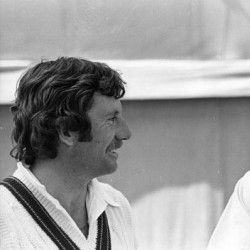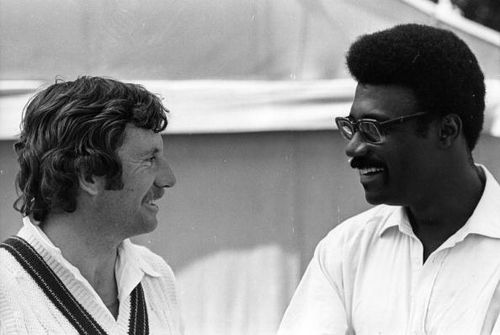
Sledging and Mind games: A sneak peek into the taboo arts of cricket

Ian Chappell (L) and Clive Llyod
Any sport at the highest level needs from its practitioners skills of two kinds. One is the physical aspect, which enables the display of the basic skills of the sport. In cricket, that skill may be the technique and footwork behind a gorgeous cover drive, or that required to bowl a fizzing leg spinner, landing on leg stump and brushing the top of off stump.
However, the skill which most often determines the fate at the top level is the mental aspect. Sledging and playing mind games have been an integral part of cricket since long and have been used as mental disintegration tools by many teams. Let us look at how they have affected matches and rivalries over the years.
Sledging became prominent in Test cricket in the mid 70s, with the Australian team led by Ian Chappell being labelled the “Ugly Australians”. They were accused of wide spread verbal abuse, intimidatory fast bowling, and unfriendly behaviour on the cricket field.
Tom Graveney, former England cricketer who played in 50s and 60s commented:
“There have been few shrewder captains than Ian Chappell, who knew how to squeeze the last drop out of any situation that might help give his team an advantage. Some of his tactics were quite intimidatory and stank of out-and-out gamesmanship that made old pros like me wince. It was an open secret that he used to encourage his players to give a lot of verbal abuse to rival batsmen when they were at the wicket in an attempt to break their concentration”.
This encouraged other teams to take this up. West Indies, who were subjected to vicious fast bowling coupled with verbal abuse in the 1975-76 Australian tour, surely benefited. The great West Indies side of the 80s and the early 90s revelled in mental dissemination of their opponents through intimidatory body language and quick bowling which could hurt opponents. Most of the rival teams lost the battle in the head while facing them.
One of the individuals who was infamous for his outbursts was Aussie speedster Merv Hughes. He famously said that he owed one-fourth of his Test wickets to sledging. He combined verbal aggression and witticisms to undo the batsmen.
One incident, as recalled by Hughes, was when he was bowling to Pakistan batsman Javed Miandad, who commented that he “was too fat to play cricket” and that he “should be a bus driver”. After being taunted for about five overs, Hughes got him out with a bouncer. As he was celebrating with his teammates, Hughes stuck his hand out in Javed’s path, and yelled, “tickets please!”.
One of the more famous episodes of sledging came in the mid 1990s, and it involved Shane Warne and Daryll Cullinan. During South Africa’s tour of Australia in 1997-98, Daryll Cullinan revealed in a newspaper that he had seen a psychiatrist to help him overcome Warne and the Aussies.
When Cullinan walked out to bat in the first test, Warne said: “Daryll, I’ve waited so long for this moment, and I’m going to send you straight back to that leather couch.” Warne bowled him for a duck and he didn’t take any further part in the Test series.
The Australian team of the 1990s and 2000s dominated world cricket, and sledging was an integral part of their strategy in breaking up opposition morale and targeting their key players. One more thing which they started was the trend of targeting the opposition captain or the key player. This inevitably led to lowering of morale of the opposition team as a whole.
Glenn McGrath often used to target the main opposition batsmen. He targeted Brian Lara when playing against the West Indies, and enjoyed great success against him. His domination over Lara was a key factor of Australia’s success over the West Indies in the mid 90s and early 2000s.
India too has its share of infamous episodes in this area. The infamous “Monkeygate” scandal, where Indian spinner Harbhajan Singh was accused of hurling racial abuse at Andrew Symonds, created quite a furore in the media in the 2007-08 series in Australia.
Sledging and mind games go hand in hand and have been a part of cricket since long now. While it is hard to decide whether it is correct to sledge or not, one cannot deny its efficacy. It has definitely impacted cricket matches and their results, and will continue to remain part and parcel of cricket in the future.